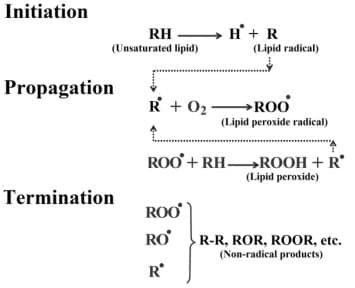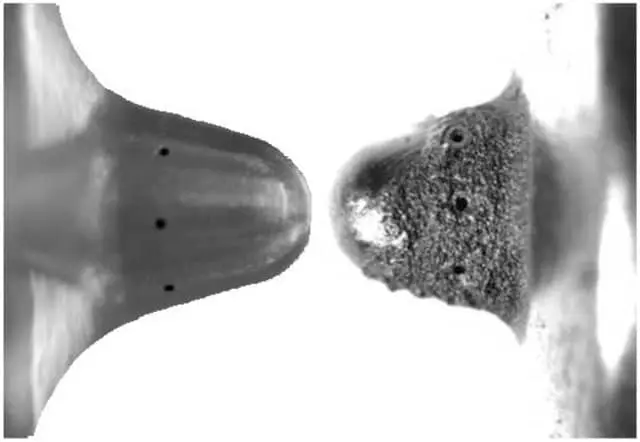Lipid oxidation
ROXY Reactors for Lipid Oxidation
ROXY electrochemical reactors are applied to investigate the oxidation of lipids. The reaction mechanism is based on radical-induced peroxidation reactions. Boron doped diamond are particularly useful in generating hydroxyl radicals, also known as the most reactive oxygen species (ROS). In an on-line continuous flow EC/MS setup this allows for the controlled oxidation of fatty acids and cholesterol, followed by immediate analysis of products in MS.
The applicability of on- and off-line electrochemistry and MS is broad, ranging from studying food oxidation to implications of lipid oxidation on human health (oxidative stress). Furthermore, EC/MS allows studying secondary reactions such as the effect of antioxidants on food products or cross-links with non-lipids such as proteins or DNA.

Example of a lipid oxidation mechanism from M. Gavahian et al.
FAME oxidation in biofuel
Another application of ROXY for lipid oxidation research came from a totally different research area, from automotive. Due to the demand for vehicle performance and to reduce the emissions, new and more efficient fuel injectors have been developed. Fuel injectors with smaller multiple holes perform better than a single big hole. However, these new type injectors suffer a higher chance of getting clogged by fuel contaminants and coking deposits. This is especially the case with biofuels.
Fatty acid methyl esters (FAME) are the primary constituents of biodiesel. During prolonged storage, they can easily undergo oxidation. Oxidation products such as peroxides, hydrogen peroxides and polymers may lead to deposits and coking in vehicles.
Electrochemical (EC) oxidation has been applied as a surrogate system for monitoring FAME oxidation. The EC cell is coupled to MS and has proved to be an excellent technique for fast monitoring of the oxidation reactions (ca. 10 min), without pre-treatment of samples and no need for chromatographic separation.
For more details: see also our technology page.

Fuel injector with clean (L) and coking nozzle tip. Image from A. Montanaro, L Allocca.